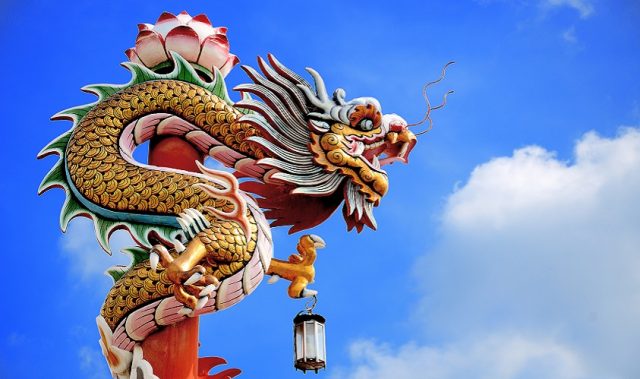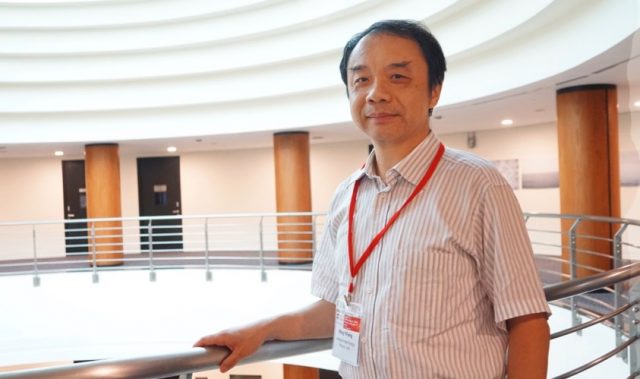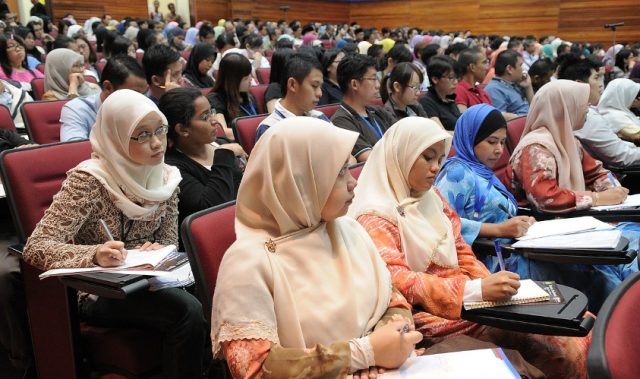
AsianScientist (Aug. 16, 2011) – The Daya Bay Group announced yesterday in Beijing that after four years of construction, the Guangdong Daya Bay Nuclear Power Station’s two antineutrino detectors – located 100 meters in the ground, and 360 meters away from the nuclear plant – have finally started collecting data.
The announcement, released by the CAS Institute of High Energy Physics, marks the consortium’s first step to unlocking answers to why the universe has more matter than antimatter.
Neutrinos are nearly massless particles that hardly interact with anything else, so that billions pass through the human body, buildings, and the earth every second. They come in three different distinct “flavors”: electron neutrinos (e), muon neutrinos (μ), and tau neutrinos (τ). A neutrino can morph from one flavor into another as it flies at light speed.
However, neutrinos are uncharged and extremely difficult to detect, despite being produced by everything from the sun, to cosmic rays, nuclear plants, and even in small amounts by the human body.
The Daya Bay neutrino-oscillation experiment is designed to measure the sought-after mixing angle as muon neutrinos change into electron neutrinos – θ13 (theta one three) – by detecting antineutrinos produced by the reactors.
Scientists expect that it will take approximately two years for the Daya Bay team to measure θ13 at one percent accuracy.

The Daya Bay program, which was established in 2006, has had broad international support with 250 researchers from six countries/regions and 39 institutions.
According to the press report, the US Department of Energy (DOE) previously stopped two of their own experimental programs in favor of US scientists joining the collaboration. This is the largest basic research cooperation between China and the US, and the second largest foreign investment by the DOE in particle physics.
Vice Director Wang Yifang (王贻芳) of the Institute of High Energy Physics, said:
“This is a remarkable achievement by hundreds of scientists and engineers around the world over eight years – with four years of preparation and four years of construction.”
“Our collective effort has led to the building of the detector facility. We are now able to analyze neutrino oscillations and collect accurate measurements from it.”
Dr. Kam-Biu Luk, Daya Bay spokesperson from the Lawrence Berkeley National Laboratory said:
“With the first data from Daya Bay, we can now begin to measure the unknown mixing angle, and eventually obtain the oscillation amplitude measurement to within 1 percent accuracy.”
“Our measurements are more accurate by an order of magnitude than on-going experiments. These measurements will help us to understand the first stages of evolution of matter after the Big Bang, and why is there more matter than antimatter in the universe today,” Dr. Luk said.
Led by China and the United States, other partners of the Daya Bay Group include Russia, Czech Republic, Hong Kong SAR, and Taiwan.
Domestic partners include the CAS Institute of High Energy Physics, Tsinghua University, China University of Science and Technology, Nanjing University, Shanghai Jiaotong University, and Shandong University, besides 15 research institutes and institutions. China Guangdong Nuclear Power Group provided significant support for the construction of the facility.
Besides the Daya Bay Group, there have been eight international experiments, including research at the Japan Proton Accelerator Research Complex in Tokai, Japan which began in January 2010.
——
Source: Institute of High Energy Physics.
Disclaimer: This article does not necessarily reflect the views of AsianScientist or its staff.
#China #China Guangdong Nuclear Power Group #China University of Science and Technology #Chinese Academy of Sciences #Chinese Ministry of Science #Daya Bay Neutrino Experiment #Institute of High Energy Physics #Ling Ao Nuclear Power Plant #Nanjing University #Natural Science Foundation of Guangdong Province Shenzhen #Shandong University #Shanghai Jiao Tong University #Tsinghua University












